Database Monitoring That Keeps Your Stack Running Smoothly
Ensure performance, availability, and scale across your entire database environment with unified observability for hybrid infrastructure and the intelligence to act on what matters.
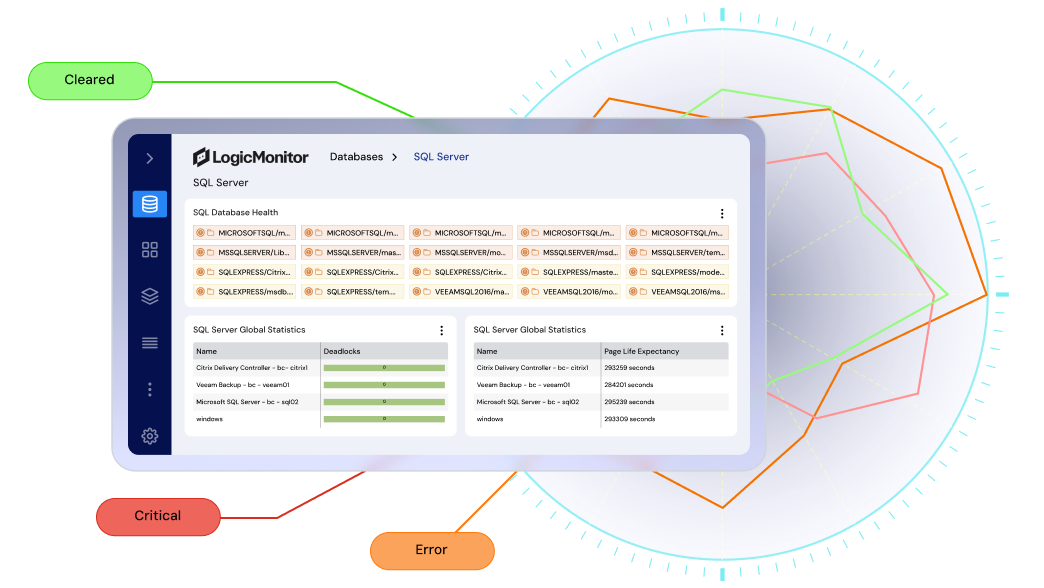


Ensure performance, availability, and scale across your entire database environment with unified observability for hybrid infrastructure and the intelligence to act on what matters.

When performance dips, your team knows exactly where to look, so downtime is brief and business impact is minimized.
Healthy databases mean no more slow queries dragging down applications, so performance stays strong and users stay happy.
Understand how your databases are used over time, so you can scale wisely, optimize spend, and plan ahead with confidence.
Fewer false alerts and better context mean your team can move from reactive scrambling to proactive improvement.
Whether you’re monitoring five databases or five thousand, in the cloud or on-prem, LM Envision grows with you seamlessly.
From DBAs to developers to ITOps, everyone works from the same source of truth, so handoffs are faster and silos don’t slow you down.
OBSERVABILITY POWERED BY LOGICMONITOR ENVISION AND EDWIN AI
From query performance and resource utilization to real-time alerting and historical trend analysis, LM Envision delivers full visibility into every database.
Auto-discover cloud and on-prem databases with no agents, scripts, or guesswork required.
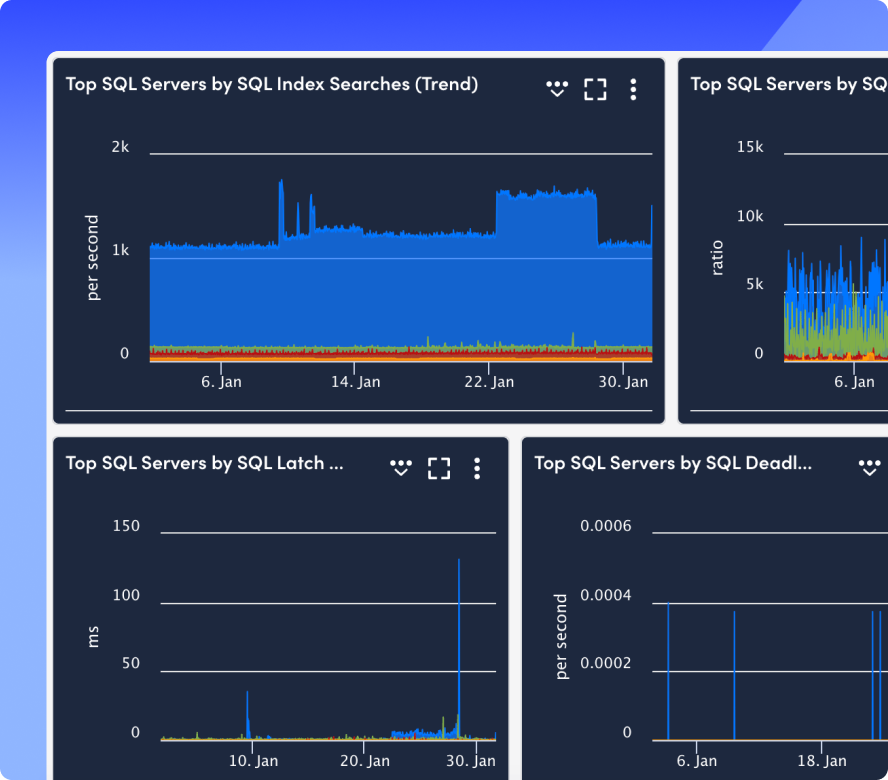
Track execution time, connection health, and throughput in real time to catch bottlenecks early.
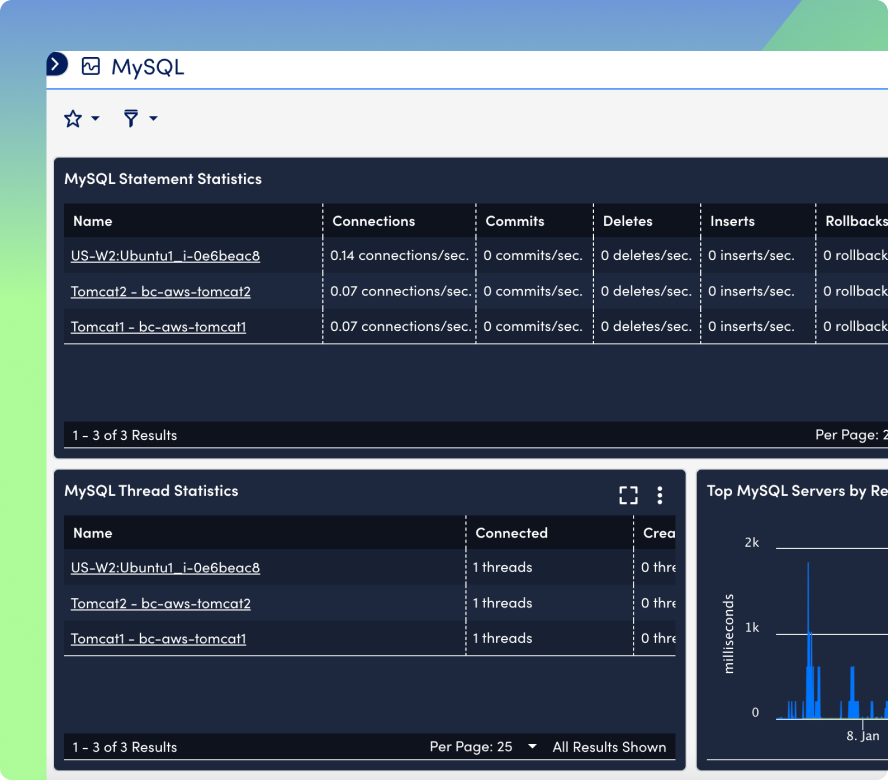
Receive alerts that are tuned to real thresholds and context, not blanket rules.
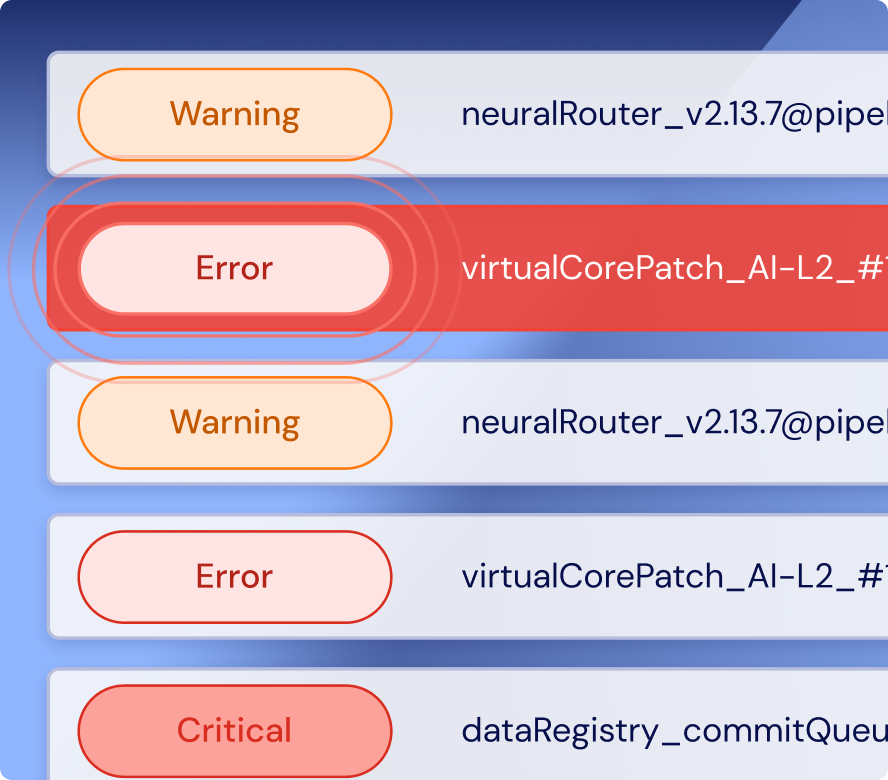
Track usage over time to prevent capacity issues and make smarter scaling decisions.
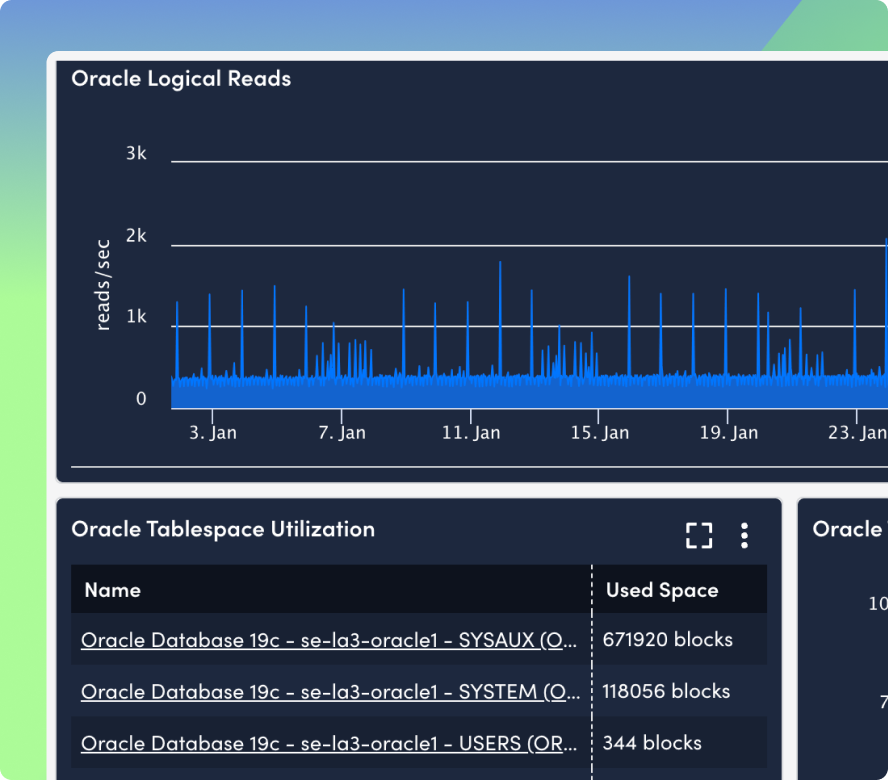
Go beyond the database—link performance to storage, app, and network health in one view.
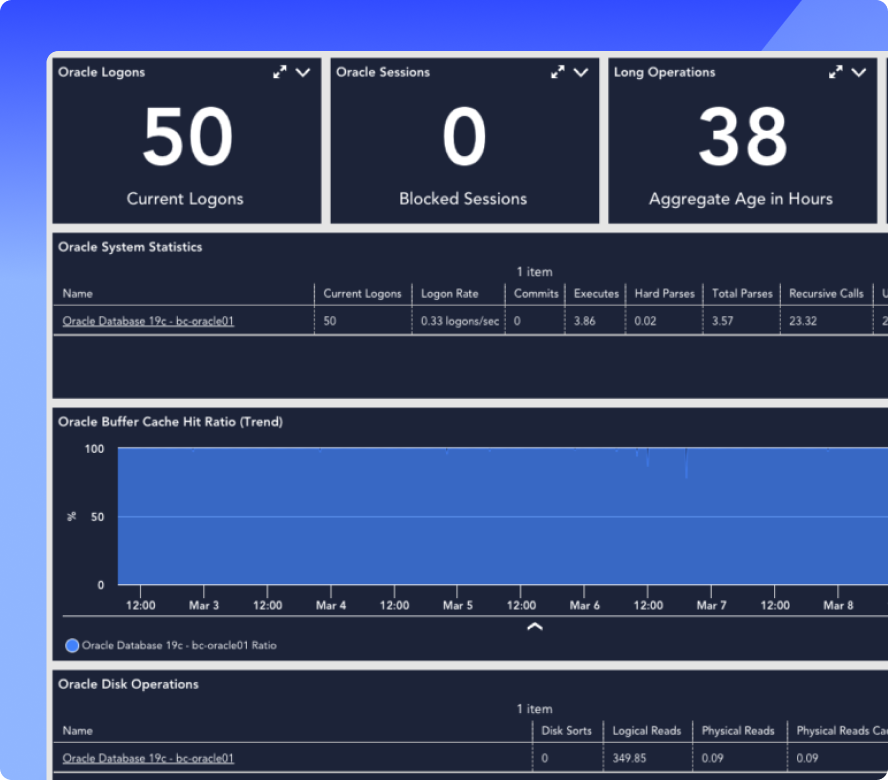
Integrations
LM Envision integrates with the most widely used relational and NoSQL databases, including Oracle, MySQL, Microsoft SQL Server, PostgreSQL, MongoDB, and Cassandra. Whether on-prem or in the cloud, you’ll get full visibility without installing agents or writing custom scripts.
100%
collector-based and API-friendly
3000+
integrations and counting
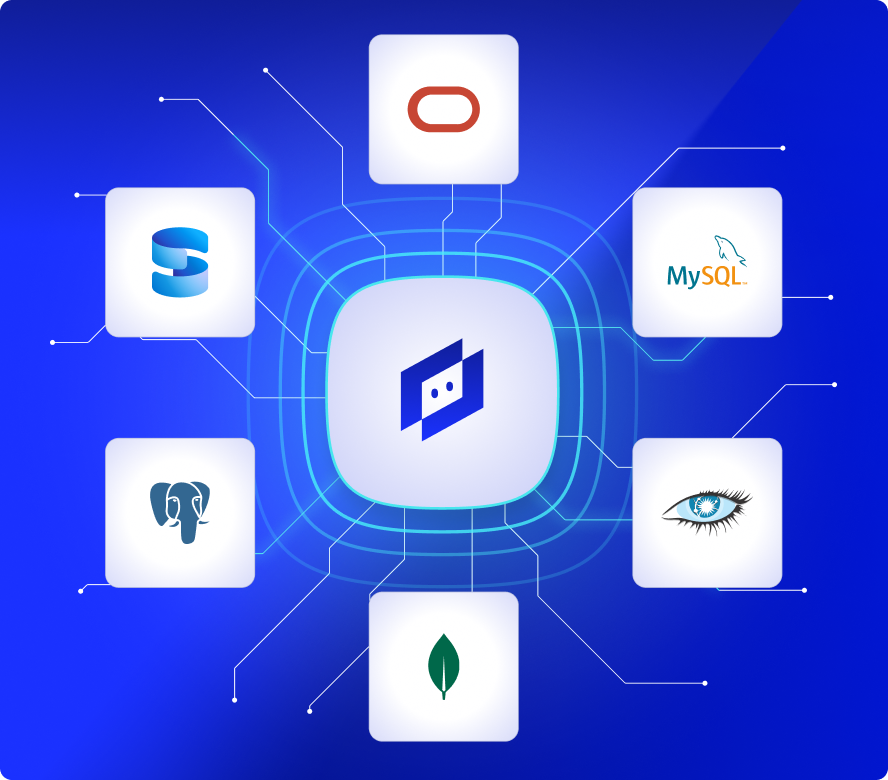
AI AGENT FOR ITOPS
Edwin AI helps you stay ahead of database issues by automatically detecting anomalies, correlating performance trends, and summarizing incidents in plain language. Whether you’re investigating slow queries, connection spikes, or resource bottlenecks, Edwin surfaces root cause fast, so your team can focus on fixing, not digging.
67%
ITSM incident reduction
88%
noise reduction
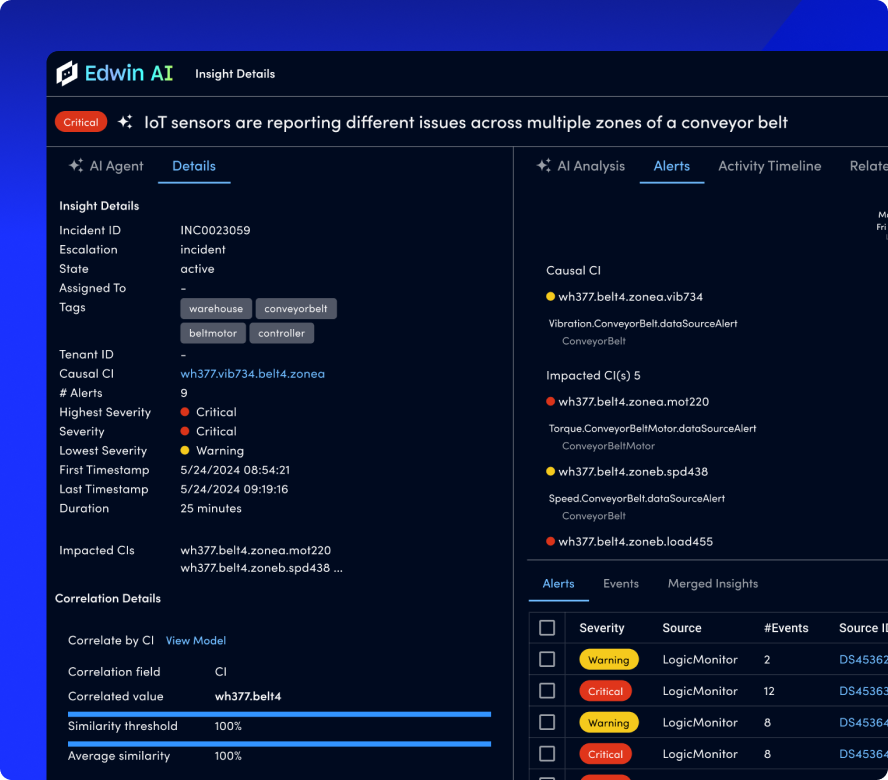
BY THE NUMBERS
GET ANSWERS
Get the answers to the top database monitoring questions.
LM Envision offers out-of-the-box support for Oracle, MySQL, Microsoft SQL Server, PostgreSQL, MongoDB, Cassandra, and more. You can monitor databases across hybrid environments—on-premises, in the cloud, or both.
No. LM Envision uses a lightweight, agentless collector and built-in autodiscovery to monitor databases, without installing agents on individual hosts.
Yes. LogicMonitor provides deeper visibility into cloud databases than native tooling, with metrics on throughput, query latency, connection counts, and resource utilization, alongside infrastructure context.
LM Envision uses anomaly detection and dynamic thresholds to learn what’s normal in your environment. This reduces false positives and ensures your team is only alerted when something truly impacts performance or availability.
Absolutely. LM Envision unifies database, application, network, and infrastructure metrics into a single platform, so you can understand exactly where slowdowns originate and resolve them faster.
Most teams begin monitoring databases in minutes. With agentless onboarding, prebuilt dashboards, and out-of-the-box support for top platforms, setup is fast and painless.
